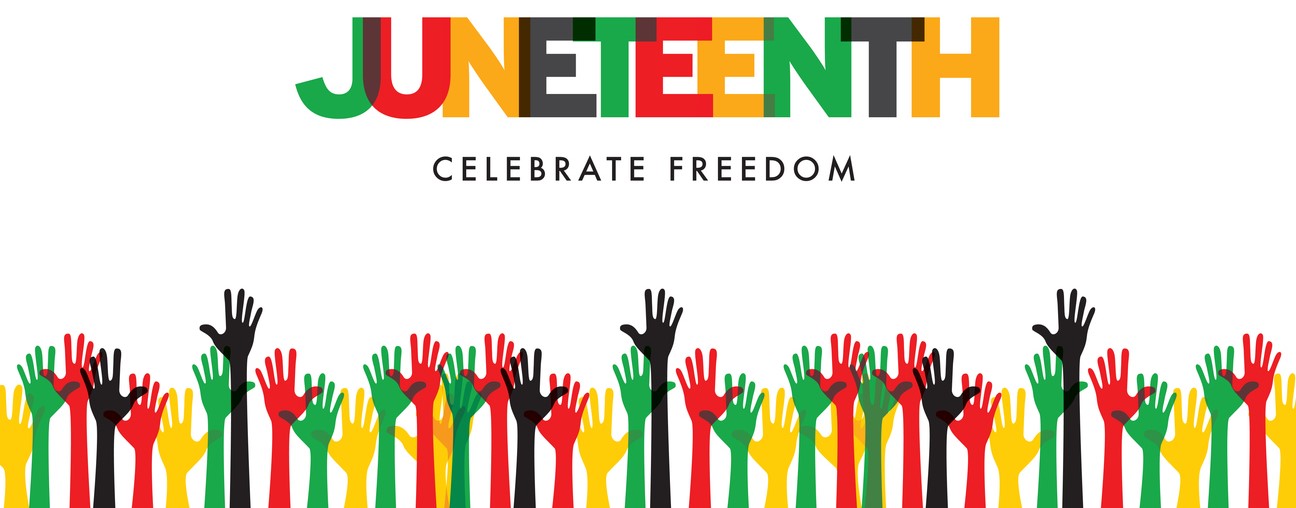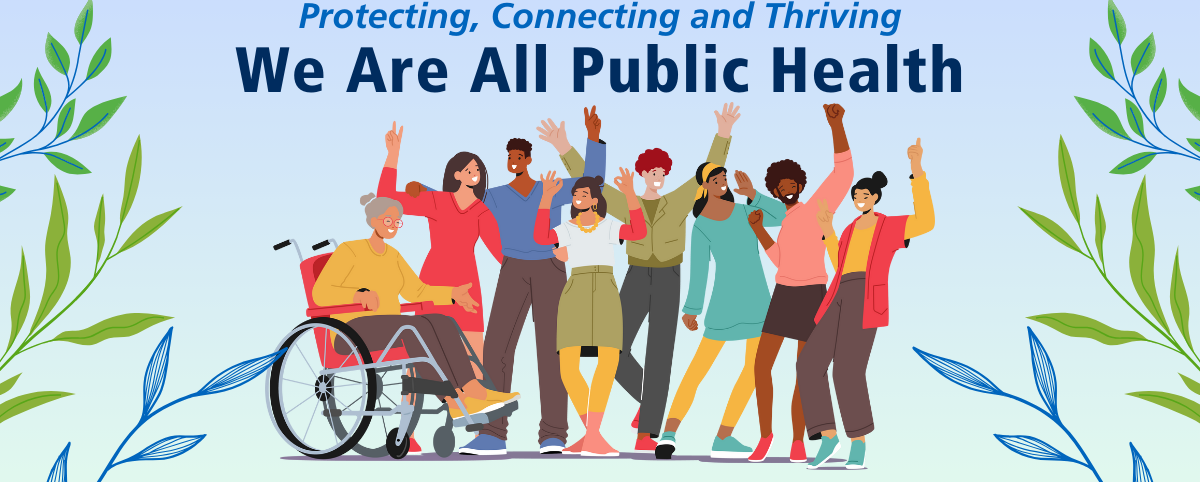State Category: Nebraska
Building Resilience: How Recent Federal Policy is Laying the Groundwork for Improved Climate Adaptation
TFAH Recognizes Juneteenth
(Washington, DC – June 18th, 2024)
In honor of our mission to promote optimal health for every person and community, TFAH is proud to celebrate and recognize Juneteenth.
The Juneteenth federal holiday recognizes the end of Black enslavement in Texas in 1865 — a two-and-a half-year delay of freedom after the signing of the Emancipation Proclamation. The holiday celebrates the resilience and achievement of Black Americans and also serves as a reminder that structural racism, especially for Black Americans, continues to be a barrier to well-being and opportunity for many in this country.
TFAH is committed to advancing policies that ensure equitable access to the economic, social and environmental factors that allow people to enjoy optimal health. Supporting these efforts advances opportunities for communities of color facing structural disadvantage. That includes:
- Make advancing health equity and eliminating health disparities a national priority.
- Support community-driven, multisector efforts to address upstream drivers of poor health through CDC’s Social Determinants of Health and Racial and Ethnic Approaches to Community Health (REACH) Programs.
- Invest in a diverse public health workforce and build the pipeline of workers, including through loan repayment and other recruiting and retention programs.
- Ensure the public health infrastructure meets the needs of all communities, including complete, disaggregated data collection.
- Ensure access to high-quality healthcare for all.
- Create a national standard guaranteeing job-protected paid family, sick, and medical leave for all employees.
- Expand efforts to protect against health impacts of climate change, including extreme heat, which disproportionately impact populations of color.
- Increase nutrition security through successful programs like the Special Supplemental Nutrition Program for Women, Infants, and Children (WIC) and Supplemental Nutrition Assistance Program (SNAP) and alleviate poverty through tax credits for working families, such as Earned Income Tax Credit.
- Center communities and people of color when developing health promoting strategies. Agencies and organizations should work with communities that are disproportionately impacted and incorporate their voice and lived experience in decision-making wherever possible.
The Association for State and Territorial Health Officials Achieves Age-Friendly Public Health Systems Recognition
First National Organization to Achieve Age-Friendly Public Health Systems Recognition
(Washington, DC – June 12, 2024) – Trust for America’s Health (TFAH) is pleased to announce that the Association of State and Territorial Health Officials (ASTHO) has earned Advanced Recognition through TFAH’s Age-Friendly Public Health Systems (AFPHS) Recognition Program.
The AFPHS Recognition Program highlights the efforts of departments of health and public health organizations designed to improve the health and well-being of older people. ASTHO is the first national-level organization to achieve AFPHS recognition.
TFAH is a long-time partner of ASTHO in supporting state and territorial health departments to advance health equity and optimal health for all. ASTHO and TFAH have partnered on healthy aging activities since the inception of TFAH’s Age-Friendly Public Health System initiative in 2017, including participating in AFPHS programs and contributing to the development of AFPHS resources.
“ASTHO continues to be forward-thinking in the guidance it provides to its members and partners, including information and resources that enable communities to be better prepared to help their older adult population thrive, said J. Nadine Gracia, M.D., MSCE, TFAH President and CEO. “TFAH applauds ASTHO’s commitment to health equity and the many ways that this commitment enhances efforts to improve older adult health.”
“ASTHO is honored to be recognized by TFAH,” said Dr. Joseph Kanter, M.D., MPH, ASTHO Chief Executive Officer. “Our team is motivated to continue supporting public health departments in elevating their work on healthy aging and older adult health.”
Action steps for recognition are based on the AFPHS 6Cs Framework: creating and leading; connecting and convening; coordinating; collecting, analyzing and translating data; communicating; and complementing.
ASTHO achieved AFPHS Advanced Recognition based on multiple activities that are specifically aligned with the AFPHS 6Cs Framework. These include:
- Creating and leading – ASTHO develops and maintains resources on improving older adult health and well-being, including technical packages and webinars.
- Connecting and convening – ASTHO hosts a learning community to coordinate community-clinical linkages to prevent falls among older adults.
- Collecting relevant data – ASTHO provides technical assistance to states in the analysis of their Behavioral Risk Factor Surveillance System data on several areas including subjective cognitive decline and caregiving.
- Communicating – ASTHO developed an e-Learning module to support public health agencies in gaining a foundation in healthy aging as a public health issue.
- Complementing – ASTHO developed a guide with examples to help states expand their fall prevention strategies.
TFAH’s Age-Friendly Public Health Systems initiative is made possible with generous support from The John A. Hartford Foundation.
To learn more about the Age-Friendly Public Health Systems initiative, visit Age-Friendly Public Health Systems – Trust for America’s Health (afphs.org)
# # #
Trust for America’s Health is a nonprofit, nonpartisan public health policy, research, and advocacy organization that promotes optimal health for every person and community and works to make the prevention of illness and injury a national priority. www.tfah.org
The Association of State and Territorial Health Officials (ASTHO) supports the work of state and territorial public health officials and furthers the development and excellence of public health policy nationwide. About Us | ASTHO
The John A. Hartford Foundation, based in New York City, is a private, nonpartisan, national philanthropy dedicated to improving the care of older adults. The leader in the field of aging and health, the Foundation has three areas of emphasis: creating age-friendly health systems, supporting family caregivers and improving serious illness and end-of-life care. https://www.johnahartford.org/
Ensuring Culturally and Linguistically Appropriate Mental Health Services Will Reduce Health Disparities and Promote Well-being
In 1966, Dr. Martin Luther King, Jr. famously condemned injustice in health as the most shocking of all forms of inequality. As TFAH recognizes Mental Health Awareness Month almost 60 years later, populations of color and other underserved groups in the United States continue to experience disparities in behavioral health outcomes and the availability and quality of care. By supporting and promoting culturally and linguistically appropriate services (or CLAS), however, policymakers can reduce these disparities and promote well-being for all Americans.
The Office of Minority Health at the U.S. Department of Health and Human Services (HHS) defines CLAS as services that are respectful of and responsive to cultural and communication needs, including through consideration of cultural health beliefs, health literacy levels, and preferred languages. By incorporating CLAS, providers can ensure individuals and families receive respectful, understandable, effective, and equitable care. Among other features, CLAS can involve recruiting and supporting a culturally and linguistically diverse workforce, offering language assistance to individuals with limited English proficiency, and collecting and maintaining accurate data to evaluate impacts on health equity and outcomes.
The U.S. mental health care system, specifically, has struggled to address the needs of culturally and linguistically diverse populations; as a result, racial and ethnic minority populations have historically been less likely to receive necessary mental health care and more likely to receive low-quality care. In addition, these groups are more likely to use hospitals and inpatient facilities to address mental health needs instead of community-based services. Across the healthcare system, non-white patients report lower quality patient-physician interactions, less participation in medical decision making, and lower overall satisfaction with care. Other social and economic factors like lack of health insurance, limited income, transportation barriers, and experiences of racism and bias also contribute to these outcomes. In addition, a recent report found that 50 percent of LGBTQ+ young people who wanted mental healthcare could not get it due, in part, to a lack of affordable options and fears of negative reactions or other consequences.
Racial and ethnic health disparities impose a high burden in the United States—one study found $451 billion in costs, including medical expenses, lost productivity, and premature death, for 2018 alone—but CLAS can significantly improve quality of care and advance equity. One study found that the single most important factor for increasing use of mental health services for individuals with limited English language proficiency was access to providers speaking their native languages. In addition, the use of peer support specialists and other lay health workers with community-specific experience can promote access to care and help to reduce dropout rates and boost attendance rates for patients during mental health treatment. In Native communities, for example, these workers can help overcome practical barriers to mental healthcare like lack of transportation and reduce symptoms of depression and suicide-related outcomes. An integrated care approach that coordinates a variety of services can also improve mental health outcomes for patients from racially and ethnically diverse populations.
The Biden-Harris Administration has undertaken significant efforts to support and enhance CLAS across the spectrum of behavioral healthcare. The 988 Suicide and Crisis Lifeline, which launched in July 2022, for example, has implemented specialized services for the LGBTQ+ population, and the Substance Abuse and Mental Health Services Administration announced the addition of Spanish language text and chat services in July 2023. In November 2023, the White House also released the U.S. Playbook to Address Social Determinants of Health. This document outlines strategies to “support equitable health outcomes by improving the social circumstances of individuals and communities,” including the structural inequities that “often disproportionately impact historically underserved individuals.” The 2023 HHS Equity Action Plan similarly outlined measures to improve access to behavioral healthcare coverage for underserved populations, including by developing an inclusive workforce, promoting behavioral health integration, and enhancing language services. Relatedly, in January 2024, the Centers for Medicare & Medicaid Services (CMS) announced the Innovation in Behavioral Health (IBH) Model, which will comprehensively address health-related social needs of Medicaid and Medicare populations with moderate to severe mental health conditions and substance use disorder. Importantly, this model requires participating Medicaid agencies to develop a health equity plan to address disparities in the populations they serve.
Several recent Congressional initiatives have also focused on promoting CLAS in the behavioral health system. The PEER Support Act, for example, would strengthen the peer support specialist workforce by ensuring accurate data reporting on the profession, supporting best practices on training and supervision, and addressing barriers to certification and practice. In addition, the Pursuing Equity in Mental Health Act would help establish behavioral healthcare teams in areas with underserved populations, improve training and best practices for addressing mental health disparities, and enhance outreach to populations of color to promote mental health and reduce stigma. Finally, the Health Equity and Accountability Act would help reduce health disparities by improving data reporting, supporting workforce diversity, and increasing access to CLAS.
TFAH encourages Administration officials and Congressional leaders to continue to bolster CLAS to improve behavioral health outcomes for populations of color and other underserved groups. These improvements will not only help address the high cost of health disparities in the United States but will also support foundational changes to improve access and outcomes in the future.
TFAH Celebrates Older Americans Month: Powered by Connection
In his presidential proclamation designating May as Older Americans’ Month, President Joe Biden said “Older Americans are the backbone of our Nation. They have built the foundation that we all stand upon today”.
This annual celebration, first declared in 1963, provides the opportunity to not only recognize older Americans’ contributions to our society, but also to highlight challenges and reaffirm our commitment to serving older adults across the country.
This year’s theme, “Powered by Connection,” helps us focus on the profound impact that meaningful connections have on everyone’s well-being and health, including older adults. The U.S. Surgeon General’s 2023 Advisory on the Healing Effects of Social Connection and Community underscores the importance of this engagement. While social isolation can have the same effect as smoking 15 cigarettes a day, a study in Scientific American found that strong social connections can boost a person’s lifespan by 50 percent!
The public health sector is leading in many states and communities to enhance connectedness among older adults, recognizing the value of engagement for people’s health and well-being. Many organizations are leading efforts to build inclusive neighborhoods and to include policies for mitigating social isolation into state and community health improvement plans. Public health agencies are partnering with area agencies on aging, YMCAs, or other community-based organizations to improve access to facilities and programs that provide services to older adults, particularly those in underserved communities. Some are leading efforts to pilot and expand intergenerational programs, connecting older people with younger individuals who provide training on technology, for example. Local health departments are partnering with parks and recreation, transportation, and housing colleagues to build inclusive public spaces and ensure they have adequate lighting, space, and other features to bolster safety for older adults and their families.
Trust for America’s Health’s Age-Friendly Public Health Systems 6Cs Framework offers a practical guide for public health actions to improve social connectedness:
- Creating and leading changes in social isolation and loneliness among older adults by improving awareness of the health implications and motivating existing older adult systems and infrastructures to address social isolation.
- Connecting multi-sector partners to strengthen ties between healthcare systems and community-based networks and resources addressing older adult social isolation and loneliness.
- Collecting data and developing a more robust evidence base on the implications and importance of addressing social isolation.
- Coordinating existing programs for older adults to improve screening, access and service delivery to older adults and strengthen ongoing education and training on social isolation.
- Communicating how to translate current research into healthcare practices to support the reduction of social isolation among older adults.
- Complementing existing aging services to reach older adults where they are to reduce social isolation.
Social engagement is not just about having someone to chat with. It’s about the transformative potential of community engagement in enhancing mental, physical, and emotional well-being. By recognizing and nurturing the role that connectedness plays, we can mitigate issues like loneliness, ultimately promoting health across the life span for all Americans.
TFAH Celebrates National Public Health Week
April 1-7, 2024 is National Public Health Week. This year’s theme is Protecting, Connecting and Thriving: We Are All Public Health and TFAH is proud to celebrate and recognize all of the individuals, organizations, and agencies that work to protect health, advance equity, and promote well-being in communities nationwide.
Public health workers are on the front lines helping communities prevent chronic diseases and substance misuse, defending against disease outbreaks, protecting our water supply, and preparing for and responding to natural and human-caused disasters. Their work is constant and critically important to improving and protecting the health and safety of all communities.
Examples of the contributions of the public health system to advancing Americans’ health are many, including:
- Increasing life expectancy – Americans’ life expectancy steadily increased during the 20th century and through 2009 the first decade of the 21st century, was flat between 2010 and 2018 the next decade, and declined during the COVID-19 pandemic. The latest available data, for 2022, showed a slight rebound in the life expectancy trendline.
- Delivering vaccines – the 20th and beginning of the 21st centuries saw substantial decreases in vaccine preventable diseases such as measles and polio thanks in part to public health programs to ensure vaccine access, particularly in underserved communities.
- Promoting maternal and infant health – programs to support pregnant people have created improved access to prenatal, post-partum, and infant healthcare, but more work needs to be done to address racial and ethnic disparities in maternal and postpartum health outcomes.
- Helping people who smoke quit – the initial phase of the Centers for Disease Control’s Tips from Former Smokers campaign (2012 – 2018) helped more than one million people successfully stop smoking, which has prevented an estimated 129,000 early deaths and saved approximately $7.3 billion in smoking-related healthcare costs.
- Protecting health during extreme heat – extreme heat threatens the public’s health. Several U.S. jurisdictions have heat response plans, and others are working on creating such plans. Heat response plans outline actions to mitigate the impact of the increasing number and intensity of heatwaves.
“Public health practitioners work tirelessly to prevent disease, prepare for and respond to disasters, address health disparities, and create healthy communities. This vital work deserves support and requires investment to fully fund the public health infrastructure and its workforce,” said Dr. J. Nadine Gracia, M.D. MSCE, President and CEO of Trust for America’s Health.
Most of the money spent on healthcare in the U.S. goes toward preventable illnesses and injuries. Increased and sustained funding for public health would be an investment in prevention and would help to reduce healthcare spending over time. TFAH has called for $4.5 billion annually to adequately fund public health infrastructure across the country. As the White House and Congress work on FY 2025 appropriations, lawmakers should support the full range of work the CDC and health departments do every day to keep communities safe and healthy.
A different public health theme is highlighted each day during National Public Health Week. Visit the American Public Health Association and to access information and resources on each topic.
How the 10 Essential Public Health Services Align with the AFPHS 6Cs Framework for Supporting Healthy Aging
New Report Measures States’ Emergency Preparedness and Recommends Policy Actions to Strengthen the Nation’s Public Health System and Emergency Preparedness
Special Section Examines Health Impacts of Extreme Heat and the Disproportionate Risks for Certain Population Groups
(Washington, DC – March 14, 2024) – Ready or Not 2024: Protecting the Public’s Health from Diseases, Disasters, and Bioterrorism, released today by Trust for America’s Health, identifies key gaps in national and state preparedness to protect residents’ health during emergencies and makes recommendations to strengthen the nation’s public health system and improve emergency readiness.
As the nation experiences an increasing number of infectious disease outbreaks and extreme weather events, the report found that while emergency preparedness has improved in some areas, policymakers not heeding the lessons of past emergencies, funding cuts, and health misinformation are putting decades of progress in public health preparedness at risk.
Based on nine indicators, the report tiers states, and the District of Columbia, into three readiness levels: high, middle, and low. This year’s report placed 21 states and DC in the high-performance tier, 13 states in the middle-performance tier, and 16 states in the low-performance tier.
High Tier – 21 states & DC
AL, AZ, CO, CT, DC, FL, GA, KS, MA, ME, MS, NC, NE, NJ, OH, PA, RI, SC, TN, VA, VT, WA
Middle Tier – 13 states
AR, DE, IA, ID, IL, MD, MO, MT, NH, NM, OK, UT, WI
Low Tier – 16 states
AK, CA, HI, IN, KY, LA, MI, MN, ND, NV, NY, OR, SD, TX, WV, WY
The report is designed to give policymakers actionable data and benchmarks to improve their jurisdiction’s readiness through new and sustained investment in public health infrastructure, modern data systems, a larger and more diverse public health workforce, and collaboration between public health and healthcare systems, and both systems’ ability to surge capacity in response to emergencies. Additional areas of responsibility for the public health system are enhancing vaccine access and monitoring municipal water systems safety.
“This report underscores the need for comprehensive investment in public health infrastructure and preparedness and highlights the importance of addressing the disproportionate effects of underinvestment in public health on communities of color and other groups that have been underserved or marginalized,” said Dr. J. Nadine Gracia, President and CEO of Trust for America’s Health. “Recent public health emergencies, from wildfires to infectious disease outbreaks, not only reveal the imperative for a modernized public health system they also highlight the intrinsic link between the overall health of a community and its ability to be resilient during an emergency. Focusing on eliminating health disparities, advancing health equity, and stemming the rise in chronic diseases is essential for enhancing the nation’s emergency preparedness.”
The report’s special section discusses the increasing health risks from extreme heat, including for particular population groups: people who live in under-resourced communities, people living in urban heat islands or without air conditioning, people who work outdoors, people with chronic diseases, pregnant individuals, infants, children, and older adults. In 2022, more people died in the U.S. due to extreme heat than from any other single type of weather event.
The report’s findings showed both areas of strength in the nation’s health emergency preparedness and areas that need attention.
Areas of strong performance include:
- A majority of states have made preparations to expand healthcare and public health laboratory capacity in an emergency. As of the end of 2023, 39 states participate in the Nurse Licensure Compact, which helps facilitate emergency response efforts by allowing nurses to work in multiple member states, both in person and via telehealth, without the need for additional state licenses. Additionally, 46 states and the District of Columbia have written plans for the expansion of public health laboratory services during health emergencies.
- Most states (43) and the District of Columbia are accredited in the areas of public health or emergency management, with many accredited in both.
- A majority of states (at least 37) and the District of Columbia either maintained or increased their public health funding during fiscal year 2023. State investment in public health is particularly important because most federal funding in response to the COVID-19 pandemic was temporary, one-time funding.
Areas that need attention include:
- Too few people are vaccinated against seasonal flu. During the 2022-2023 flu season, only 49 percent of the population (ages 6 months and older) was vaccinated against the flu, well short of the 70 percent goal established by Healthy People 2030. There is concern among public health experts that misinformation about the COVID-19 vaccine could be impacting the uptake of other vaccines.
- On average, only 25 percent of acute care hospitals in states earned a top-quality patient safety grade in fall 2023. Hospital safety scores measure performance on issues such as healthcare-associated infection rates, intensive-care capacity, and an overall culture of error prevention – all critical for performing at their best during health emergencies.
- On average, only 55 percent of U.S. workers used paid time off during the period from March 2018 to March 2023. Access to paid time off is an important readiness measure because workers who go to work sick risk spreading infections in the workforce and throughout the community.
Policy action is needed:
The report contains recommendations for policy actions across both public and private sectors that would create stronger public health preparedness, including:
- Congress should enhance and modernize public health infrastructure by investing $4.5 billion per year to support foundational public health capabilities at the federal, state, tribal, local, and territorial levels, including investments in data systems and the public health workforce.
- Congress should empower CDC to collect public health data in a timely and coordinated manner, and the U.S. Department of Health and Human Services (HHS) and all jurisdictions should ensure timely, complete, and disaggregated data collection and reporting. Together, these will enable faster and more effective detection and response to health emergencies.
- Policymakers should prioritize rebuilding trust in public health agencies and leaders. Public health policy decisions should always be based on the best available science and free from political considerations, and federal agencies should be equipped to provide timely and clear public health guidance.
- Congress should provide at least $1.1 billion per year to support vaccine infrastructure and equitable delivery of vaccines. States should minimize vaccine exemptions for schoolchildren, and healthcare facilities should increase vaccination rates among healthcare workers.
- Congress should significantly increase investments in public health initiatives to prevent, detect, and contain antimicrobial resistance.
- Congress and states should provide job-protected paid leave to contain the spread of outbreaks and protect health.
- Congress should provide significant funding for medical countermeasures and should work with the private sector to plan for their distribution and dispensing when needed.
- Congress, HHS, and healthcare leaders should strengthen healthcare readiness and recovery, and state and local emergency planners should work with the healthcare sector to integrate healthcare delivery into emergency preparedness and response.
- Congress should increase investments in programs that identify and mitigate the health impacts of climate change, environmental hazards, and extreme weather.
Read the report
Trust for America’s Health is a nonprofit, nonpartisan public health policy, research, and advocacy organization that promotes optimal health for every person and community and makes the prevention of illness and injury a national priority.







